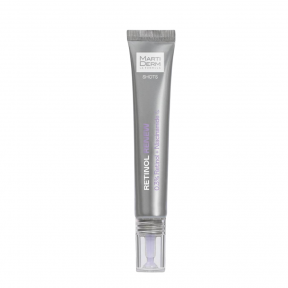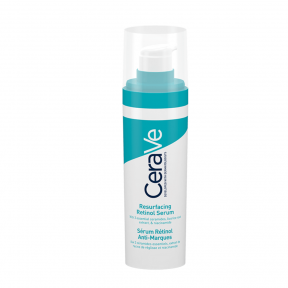WHY YOU SHOULD ADD RETINOL TO YOUR SKINCARE
-

LEARN WHAT RETINOL IS, WHAT ITS BENEFITS ARE, AND HOW TO CHOOSE AND APPLY IT CORRECTLY.
When it comes to effective skincare, retinol is a powerful ingredient worth mentioning. Widely acclaimed by dermatologists and skincare enthusiasts, retinol offers a variety of benefits for the skin and helps to combat a number of skin problems. In this article, we'll explore what retinol is, its benefits for the skin, and the problems it helps treat. In addition, we will discuss the best way to apply retinol and highlight the precautions needed to avoid skin damage. We will also provide guidance on how to choose the right retinol, according to your skin type, and the different ways to include it in your skin care routine.
What is retinol and what are its benefits for the skin?
Retinol is a form of vitamin A - a powerful antioxidant that plays a key role in skin health and regeneration. When applied topically, retinol has the ability to stimulate collagen production, reduce the appearance of fine lines and wrinkles, even out skin tone, and decrease hyperpigmentation. In addition, retinol helps minimize the appearance of enlarged pores, control oil production, and improve skin texture, leaving it smoother and softer.
How can retinol help me?
Retinol is known for its effectiveness in treating various skin problems, including acne, aging, dark spots, and sun damage. Its ability to accelerate cell renewal and promote skin regeneration makes it a powerful ally for healthy, rejuvenated skin.
How to apply retinol correctly and what precautions to take
When introducing retinol into your skincare routine, it is important to start with a gradual approach that allows the skin to get used to the ingredient. Start by applying retinol every other day or every two days and gradually increase the frequency as your skin adjusts and tolerates it better.
Apply retinol in the evening, after cleansing and toning the skin. Spread a small amount of product on your face, avoiding the eye and lip area. Then wait a few minutes for the retinol to be absorbed before applying other products.
It is important to note that retinol can cause skin sensitivity and/or irritation, especially at the beginning of usage. Be sure to moisturize your skin well and use a sunscreen during the day, as retinol can increase skin sensitivity to sunlight. If significant irritation, redness, or flaking occurs, reduce the frequency of application or consult a dermatologist for personalized advice.

How to choose the right retinol for me?
When it comes to choosing the right retinol for you, it is important to consider your skin type and individual sensitivity. Retinol products generally come in different concentrations, ranging from 0.1% to 1% or higher. If you have sensitive skin, start with a lower concentration and observe how your skin reacts before increasing the concentration.
Also, consider the formulation of the retinol product. Some people, with more sensitive skin, may benefit from encapsulated retinol formulas, which are released gradually into the skin, reducing the chance of irritation. Look for products labeled "encapsulated retinol" or "controlled release".
Different ways to include retinol in your skincare
Retinol can be found in different forms of skincare products, such as serums, creams, capsules, and oils. The choice of retinol form depends on your personal preferences and the needs of your skin.
- Retinol serums are generally light and quickly absorbed, making them ideal for oily or combination skin.
- Retinol creams, on the other hand, are more moisturizing and suitable for dry or mature skin.
- Retinol capsules offer a concentrated dose of the ingredient, providing an intensive treatment for the skin. They are convenient and offer a precise measure of product.
- Retinol oils are an interesting option for dry skin, as they provide additional hydration to the skin while delivering the benefits of retinol.
Including retinol in your skincare routine can have a number of benefits, such as reducing fine lines, improving skin texture, and diminishing dark spots. However, it is important to follow the correct guidelines when using retinol, starting gradually and taking precautions to avoid skin irritation. Adapt the concentration and form of retinol according to your individual skin type and sensitivity. Be consistent with your use, and remember to moisturize your skin well and protect it from UV rays during the day.
Check out our retinol options!




















